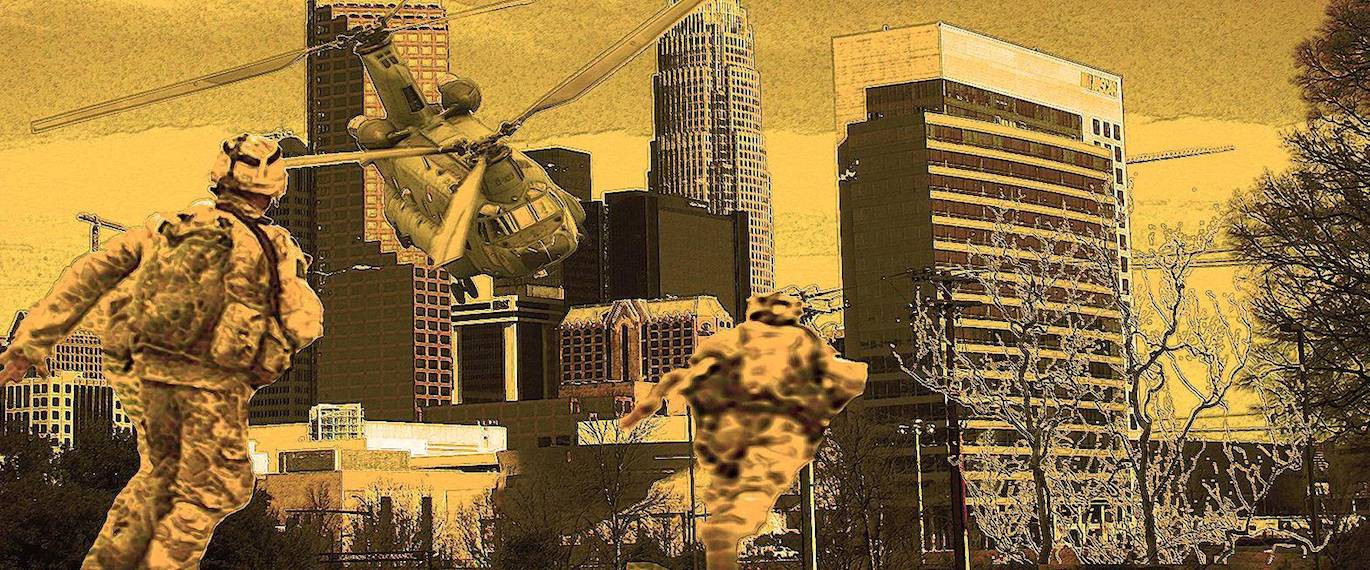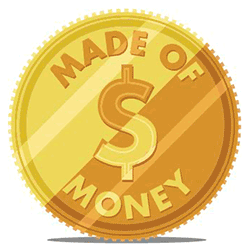

When you find yourself down on your luck, send for “lawyers, guns, and money” sang Warren Zevon. But what happens when things truly fall apart, and there’s not even a working currency?
To create a hypothetical, utopian scenario, let’s imagine that the revolution is won. Corporations have been made public and debt forgiven. As far as the national economy is concerned, the old currency has been shredded. You need to start again, but what next? How does a government go about rebooting an entire national currency when the old one has failed?
Call in Warren L. Coats Jr., for one. Whether in failed states crumbled by warring factions or those facing insurmountable hyperinflation and debt, Coats has made it his life’s work to respond to these exact apocalyptic situations. Raised in central California and educated at the University of California, Berkeley and the University of Chicago, Coats retired from the International Monetary Fund in 2003 with a résumé that reads like a travelogue through the world’s most perilous countries in the closing decades of the 20th century. The USSR, Iraq, Bosnia, South Sudan–if a country was coming out of conflict or collapse and needed currency, Coats was the go-to man for creating something out of nothing.
“Convincing the public that the new currency will be well managed to preserve its value over time is the main goal,” Coats told me. No one wants the past repeated. “The key challenge was always to have a credible monetary policy and central bank for managing the new currency. You [were] therefore assuring the public that the new currency would be better than the old one. In these circumstances, people would willingly exchange the old for the new.”
As with any mechanism or system, when you don’t particularly notice it and can rely on its steady existence, that’s a sign things are working well. Where successful, currency is rich with an identity and ease-of-use accepted and trusted by the country it represents. If that creation of confidence is the Holy Grail in establishing a new national currency, here are five key tenets that get you there.

1. Taxation
Tax is the philosophical foundation of any new, national currency. While the logistics of changing taxation are less straightforward, a government can create and substantiate a new currency simply by accepting it as payment for taxes. The most recent potential opening for a change in currency was in Greece this past summer when the world’s most fêted chief economist, Yanis Varoufakis, was accused of high treason for seeking to duplicate the tax records of every Greek citizen. His legitimate defense was that his position obliged him to create contingencies for exiting the euro and reestablishing the country’s former currency, the drachma. The media aptly nicknamed the scenario “Drachmageddon.” The term was both a reference to Greece’s previous currency and an omen about the loss of prestige Greece would face in dropping out of the single-currency–not to mention the logistics of issuing I.O.U.s for euros and rebuilding a drachma, so it seemed, from scratch. In an age when taxation is often maligned, and major currencies are taken for granted, the implicit connection between currency and tax is a useful moral touchstone to bear in mind.

2. Design and policy
A currency needs a name, then it needs banknotes printed. But before that, they must first be designed–and the more thoughtful, the better, especially in places where the old currency corresponds to a bitter period of conflict or life under a hegemonic power. Case and point: In the 1990s, Coats’s team had to tread carefully between the Catholic, Orthodox, and Muslim populations of three warring provinces in Bosnia and Herzegovina. In his book, One Currency for Bosnia, Coats details how this was achieved under conditions of political hostility, in a place where certain faces or buildings appearing on banknotes could easily have antagonized one faction or another. Ultimately, it was only after all three groups came together and agreed that they wanted a new currency that it was possible to loosen the deadlock. Here, a new currency became a proxy for conflict resolution in a failed state.
Once a design is approved, governments must pass laws to make the new currency legal tender, redenominate deals and assets in that currency, and announce a clear period for phasing out the old money for the new. At the time of Coats’s 1997 arrival in Bosnia, Germany’s Deutsche Mark was the only currency widely accepted and trusted across Bosniak, Serb, and Croat regions of the country. A mark of the success of Coats’s team came in 1999, when Germany replaced its Deutsche Mark with the euro, and Bosnians proved overwhelmingly content to put their faith in a currency of their own, the Bosnian dinar.

3. Valuation
When South Sudan partitioned from Sudan at the end of its civil war in 2011, Coats–coming out of retirement to assist USAID–found his work to establish a currency for the world’s newest country hindered because there had been no conclusive agreement with issuers of the old Sudanese pound about redeeming it for the new South Sudanese pound. Coats contrasts these difficulties to the situation after the fall of the USSR, when each of the former Soviet states was more than happy to gain national and financial independence from Russia and its ruble. Central Asia saw a host of particularly smooth transitions, with the exception of Turkmenistan, where multiple exchange rates and the failure to remove competing currencies from circulation meant the Turkmen government had to make a second attempt at a new currency, squandering crucial public confidence.
Nations assign and alter their currency’s value for different reasons, according to Coats. Turkey rationalized its lira in 2005, essentially knocking off six zeros in a piece of fiscal public relations that saw one million Turkish lira become the far more grounded, mature-sounding one lira. Afghanistan redenominated in 2005 as part of a raft of reforms looking to rebuild the country. There are political and economic dimensions to these considerations, too, as countries must decide what proportion of coins and paper money their currency will include. British coppers and U.S. cents are often now worth more for their zinc or copper values (known as “melt value”) than their fiat value delineates. As governments issue new money, they’re smart to consider the cost-benefit ratio of placing coins worth exceptionally low amounts into circulation.

4. The literal money maker
Practicalities aside, geopolitical and cultural thinking will always have great influence on currency creation. While the euro has long been presented as a currency union among equals, Faisal Islam’s book The Default Line points out how the plates (and thus capabilities) to print the immensely valuable 500-euro note belong only to German-speaking countries (Germany, Liechtenstein, Austria). Germany was an early champion of the larger euro note, which matches the value of its old 1,000 Mark. Now, the European Central Bank is reevaluating the benefits of keeping it in circulation, citing the large bill as a primary purveyor of criminal activity.
When Saddam Hussein was ousted as Iraq’s leader, British note-printing outfit De La Rue saw an immediate nine percent gain in its share price as markets responded to the likely printing deal. Money is, in fact, a money-making business. But for those who’ve worked establishing currencies or reported on its implementations, the word “rules” appears again and again in their analyses of what they did and how, indicating the emphasis that has to be placed on security and stability.
Whatever the tough calls and risks associated with national currency-building, Coats is positive and optimistic about its future. “Sound money is a very important part of the foundation for a successful economy,” he said. Not only does he note that “helping a country build a central bank that is managing its currency well is very fulfilling,” but without building institutions and cultures around national money there is no real point to issuing new currency. In circumstances where it isn’t possible, “dollarization” (using the U.S. dollar instead) is the simpler option–as he observed to be the case in Zimbabwe.

5. Storage and circulation
The value of bank notes in circulation also has knock-on effects for those in charge of the currency, including–bizarre but unsurprising–storage costs. The euro’s €500-note helps keep these costs down, though it leaves the currency more vulnerable to counterfeiters and use as a haven for dirty money. The U.S. Federal Reserve, meanwhile, stores a pile of $1 coins that could stretch 1,367 miles–public and retailers dislike the coin and rarely use it, but a federal law mandating the creation and minting of commemorative dollar coins for past presidents means the stockpile keeps growing.
In terms of longevity, however, coins are often cheaper to keep in circulation than paper because they don’t perish as fast and thus have lower costs to governments. In the late 18th century, as pre-revolution France struggled to order its insurmountable war debt, one theory for creating a more robust currency suited to a modernizing economy was a deliberately perishable banknote. The premise was that the note would gradually spoil as time elapsed after the productive transfer that first generated it, thus allowing the physical currency to fade with its productivity.

The future
New and precarious nations aside, have the U.S. dollar, British pound, core euro economies, and others reached a sort of end-of-currency history without room or likelihood for further change? Coats thinks that may be the case. “Central banks may make mistakes from time to time, but not big enough to fundamentally change their currencies.”
Though he did highlight the risk to reserve-currency status posed by unchecked national debt in the United States, Coats–more at home in delivering particulars than pondering hypotheticals–was to-the-point when asked in what circumstance we might see a U.S., Japan, German, or U.K. redenomination: “Hyperinflation. Which isn’t going to happen,” he said.
This sort of surety has been informed by a career in situations where immediate, on-the-ground realities take precedence. Ideas must be executed with a martial precision. Despite his position as a veteran of physical currencies, Coats is equally upbeat about the proliferation of digital currency we’ll see in the future–”to our general benefit,” he believes. Though he did caveat: “It will give the government complete knowledge of our financial dealings, which is open to abuse.” As for Bitcoin and other private crypto-currencies, Coats is blunt. “Private crypto-currencies like Bitcoin have no serious future unless government monies of the major central banks totally blow it, which is very unlikely,” he said.
Whatever the many merits of hacking away at traditional finance systems to amend them with makeshift solutions, it’s no substitute for the ability to scope and reorder something in its totality–to learn from mistakes and injustices, and start anew with money.


How We Get To Next was a magazine that explored the future of science, technology, and culture from 2014 to 2019. This article is part of our Made of Money section, which covers the future of cash, finance, economics, and trade. Click the logo to read more.
